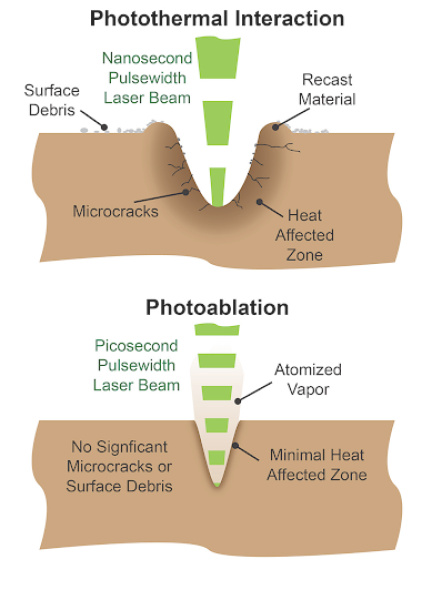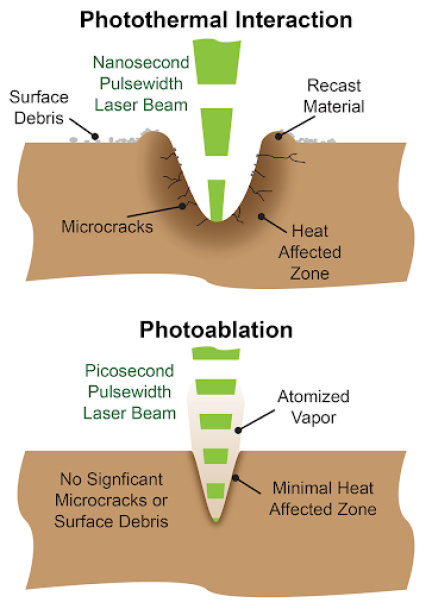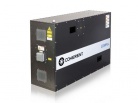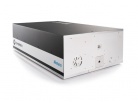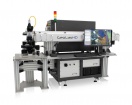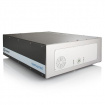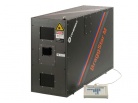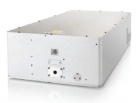What is laser ablation?
Laser ablation is the process of removing material from a solid substance. Many different types of lasers are used and this technique can be applied to virtually all classes of materials - metals, semiconductors, glass, ceramics, polymers, wood, stone, tissue and other biological materials.
Lasers are used to selectively remove material in an extremely wide range of applications - from the manufacture of advanced integrated circuit packaging to the reshaping of cornea to the production of plastic markers. In all these diverse applications, however, lasers typically offer similar advantages that set them apart from other technologies. These include:
| Spatial selectivity | This is the ability to accurately remove material over a pre-defined area to a well controlled depth, creating intricate patterns or fine detail. |
| Small heat affected zone (HAZ) | Depending on the material and the type of laser, laser ablation can be performed without significantly altering or damaging the surrounding area where the material is being removed. |
| Non-contact processing | Since laser processing does not exert any mechanical force or pressure on the workpiece, it can be used on small or fragile parts. It also reduces tooling requirements for most applications. |
| Process flexibility | Laser ablation usually does not require specialized tooling and is almost always performed under computer control. This makes it easy to change. For example, in many laser etching or engraving applications, each individual part receives a unique pattern or mark. |
Laser ablation methods
Laser ablation provides similar benefits in many applications, but the technique works using a variety of methods. These depend on the type of laser, the material itself and the requirements of the job. In general, however, all ablation processes operate based on photothermal or photoablative interaction. It is not uncommon for a combination of both to occur within a single process.
Photothermal process
In the photothermal process, material is removed by intense, spatially limited heating. Essentially, the substance is heated rapidly until the material is boiled or sublimated (directly converted from a solid to a gas or plasma without passing through an intermediate liquid phase). In this process, a considerable amount of heat is usually introduced into the workpiece. Therefore, it is not typically used on heat-sensitive parts (materials that have high thermal conductivity) or on smaller workpieces (where heat can easily reach other areas of the part). Photothermal machining typically offers relatively fast material removal, making it useful in high-performance manufacturing applications and applications that cover large areas.
Photoablation
The second method - photoablation - involves directly breaking the molecular or atomic bonds that hold the material together, rather than heating it. It is therefore a 'cold' process. There are generally two ways to achieve this bond breaking.
- The first method of photoablation involves the linear absorption of a photon in the material that has an energy greater than the chemical bond energy. This is almost always done with ultraviolet (UV) lasers, since only UV photons provide sufficient energy to break the bond in most solids. This is because the photon energy increases with decreasing wavelength, and UV light has a shorter wavelength than visible or infrared light.
- The second way to cause photoablation is to use a laser that has a high enough peak pulse power to cause nonlinear absorption. In this kind of "multiphoton" process, the material absorbs the laser energy even though it is normally transparent to the laser particle at a given laser wavelength. The peak powers required to induce nonlinear absorption can usually only be achieved using ultrashort pulses (USP).
Photoablation is used for the most precise applications and applications that require the smallest HAZ (often as small as 10 micrometers). However, the material removal rate is generally much lower than that of photothermal ablation. In addition, USP laser sources are typically larger and more expensive than lasers used for photothermal processes.
Many lasers for a myriad of applications
Virtually all laser cutting and drilling processes can be considered ablation. For our purposes, however, we will limit the term laser ablation to applications involving selective material removal or surface structuring, not through-cutting. One way to categorize the wide range of ablation applications is by material.
Laser ablation of metals
Metal ablation is used in many different industrial applications. Some of these involve the removal of foreign material from the surface of a metal component. For example, ablating rust, corrosion, paint or other coatings. It may also involve cleaning the surface of a part of oil, adhesives or other unwanted contaminants before painting, coating, bonding or other processes.
Ideally, the laser source for this type of ablation will be absorbed by a foreign substance, but not by the underlying metal. This allows relatively easy cleaning of the surface without risk of damage to the part. Depending on the specific materials, this usually means using a fiber laser, a CO2 laser, or a diode-pumped nanosecond pulse width solid-state (DPSS) laser.
In laser etching and metal engraving, which can be done for industrial marking or even for decorative purposes, the intention is to remove the material from the part itself. This is usually done with a fiber laser or nanosecond DPSS laser, usually with an output in the green or UV region. The latter lasers are mainly used for thinner, delicate or heat-sensitive parts. For the most sensitive ablation applications on heat-sensitive metals, the USP laser is sometimes used.
Laser ablation of semiconductors
The main application of laser ablation of semiconductor materials is the etching or engraving of markings on wafers in the manufacture of microelectronic circuits. For this, nanosecond DPSS lasers with output in the green or UV region are usually used, since most semiconductors are at least somewhat transparent at the infrared fundamental wavelength of these sources.
USPs are sometimes used for precision microstructuring of various semiconductors, mostly in research environments. They can also be used for precise material removal in the failure analysis of production integration circuits (decapsulation).
Laser ablation of glass
Glass is used in an extremely wide range of applications and the use of lasers for glass ablation is similarly diverse. Decorative etching applications - such as personalization or the production of designs on drinking glasses, wine glasses, mugs, bottles and more - are almost universally carried out using CO2 lasers. Higher precision glass etching tasks, including the marking of products and containers used in the semiconductor, display and pharmaceutical industries, typically use either CO2 or UV DPSS lasers.
Another important application of laser ablation of glass is the manufacture of "microfluidic" devices. These are glass substrates containing small channels (sub-millimeter cross-section) through which fluid flow can be precisely controlled. Microfluidics is the basis of so-called "labs-on-a-chip" for techniques including PCR amplification and DNA analysis. DPSS and USP UV lasers can be used to ablate these channels with high precision.
Most commonly, the laser is used to ablate the channel on the surface of a glass substrate. This is then bonded to another piece of glass to create an internal channel. However, with USP lasers it is also possible to create an internal channel directly in the solid glass substrate. This is a unique capability of USP lasers.
Laser ablation of polymers and plastics
Polymers are also ablated with lasers in many different industries. For example, high-precision laser ablation is used to texture the surfaces of medical implants and to selectively remove polymer coatings from medical devices. In microelectronics packaging, laser ablation is used to "groove" around SiP (system in package) devices that are encapsulated in a polymer resin. This is done prior to singulation (breaking down into individual devices). The wide range of polymers used in these applications, together with varying process speed requirements and other factors, means that almost all types of laser are used for precision polymer ablation.
Another important polymer ablation process is the removal of busbar insulation. Here, a CO2 laser is used to quickly remove the plastic insulator from the copper conductor.
The etching and engraving of polymers - especially acrylics - is also widely used in the production of indoor and outdoor signs. Here, too, CO2 laser-based systems are almost exclusively used. These can also be used to etch and engrave organic materials, including wood and leather, as well as stone.
Tissue laser ablation
Many surgical and therapeutic medical procedures rely on laser ablation. These include LASIK and PRK, which use an excimer laser to ablate and reshape the cornea. More than one million of these procedures are performed worldwide each year.
Lasers are used to ablate soft and hard tissue in many other surgical and dental applications. These include tumor removal, treatment of benign prostatic hyperplasia (BPH), lithotripsy (kidney stone ablation), maxillofacial surgery, and various forms of neurosurgery.
Various types of DPSS lasers are used for most surgical applications, including Er:YAG, Nd;YAG, Ho;YAG and thulium fiber lasers (TFL). All of these lasers produce high power in the mid-infrared band (which is near the absorption peak of water) and their light can be transmitted through fibers. This allows efficient and highly selective tissue removal using a minimally invasive surgical instrument.
CO2 lasers, which are not easily transmitted by fiber, are widely used in oral surgery and otorhinolaryngology applications. A major advantage of the CO2 laser is its ability to both ablate and coagulate tissue. This reduces blood loss during the procedure and facilitates rapid patient recovery.
Coherent facilitates ablation
COHERENT supports laser ablation applications from development to production. COHERENT laboratories have extensive experience in ablating many different materials and have virtually all types of lasers available on which to test and develop process procedures.
COHERENT supplies an extensive range of products for industrial and scientific etching applications. These include virtually all types of laser sources, OEM laser subsystems(which integrate the laser, beam transmission system and controller) and complete turnkey laser machines. For medical ablation applications, we supply laser gain and nonlinear crystals, beam transfer fibers, and complete fiber optic assemblies to medical laser manufacturers and complete surgical systems.
Source: coherent.com
